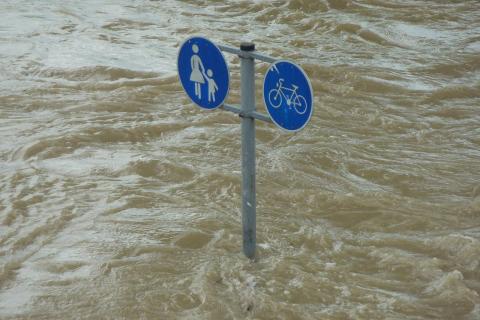This project will combine information from UKCP18 with Catastrophe (CAT) modelling and apply it to climate-driven changes in UK flood risk. The project aims to investigate the value of CAT modelling as a way of combining hazard, vulnerability and exposure into risk. It is part of the Met Office led work package From Climate Hazard to Climate Risk.
Approach
First, UKCP18 projections will be used to drive the Centre for Ecology and Hydrology’s well established grid to grid (G2G) hydrological model at 1km scale to generate future flood events. This will then be combined with CAT modelling techniques in the climate change risk assessment framework (AquaCAT) currently being used in the Third Climate Change Risk Assessment (flood project – the Future Flood Explorer) and which was used to underpin the National Infrastructure Commission assessment of flood resilience standards (2018). The combined information will be applied to a 35 to 50-year time horizon.
This merging of techniques offers significant potential to develop improved assessments of climate risk and the adaption policies needed to build resilience.
Legacy
This project intends to enhance appropriate use of CAT modelling techniques for climate change issues through this demonstration of utility and value, and to improve links between the CAT and climate modelling communities.
The dataset produced will be available to adaptation practitioners and government agencies with an interest in future flood risk, and could be used to inform the Fourth Climate Change Risk Assessment.
Publications and Resources
Read more about how this research is exploring how climate change may influence the spatial structure of widespread flood events and how any change may influence future risks and our approach to managing them in Paul Sayers’ blog.

